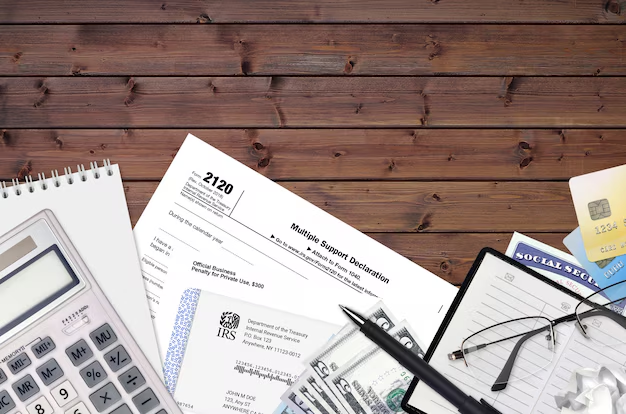Understanding 1098 Tax Forms: A Complete Guide to What You Need to Know
Navigating the complexities of tax season can often feel daunting, especially when faced with a series of enigmatic numbers and forms. Among these, the 1098 tax forms stand out, primarily because they come into play for millions every year. But what are these forms, and why are they important? This guide will walk you through the purpose, types, and relevance of 1098 tax forms, providing clarity and helping you leverage them effectively during tax season.
What is a 1098 Tax Form?
The 1098 tax form is an informational document used in the United States to report various types of payments and transactions to the IRS. Issued primarily by financial institutions or purveyors of loans, these forms serve the dual purpose of providing details to both the payer and the IRS about payments that might qualify for tax deductions. Understanding this aspect is essential because it can influence your taxable income and, in some cases, offer tax-saving opportunities.
Why is the 1098 Form Important?
1098 forms can impact your financial obligations by reducing your taxable income, which may lower your overall tax liability. They help ensure that you are neither overpaying nor underreporting your taxes, fostering accuracy and compliance with tax regulations. Whether you’re dealing with mortgage interest, student loan interest, or other qualifying payments, these forms can play a crucial role.
Types of 1098 Tax Forms
The term "1098" doesn't refer to a single document but rather a collection of related forms, each serving a specific purpose. Let’s break down the various types:
1. 1098 - Mortgage Interest Statement
Purpose: This form is issued by lenders to homeowners, detailing the amount of mortgage interest paid throughout the year.
- Relevance: Deducting mortgage interest can significantly reduce taxable income.
- Who Should Pay Attention: Homeowners with a mortgage can benefit by reporting the interest, potentially lowering their tax liability.
2. 1098-E - Student Loan Interest Statement
Purpose: The 1098-E reports interest paid on student loans, crucial for those who have taken educational loans.
- Relevance: Eligible borrowers can deduct up to a certain limit, impacting their adjusted gross income.
- Who Should Pay Attention: Anyone repaying student loans should review this form to secure possible deductions.
3. 1098-T - Tuition Statement
Purpose: The 1098-T is issued to students, outlining qualified tuition and educational expenses.
- Relevance: Helps determine eligibility for education-related credits and deductions.
- Who Should Pay Attention: Students or families paying educational expenses can explore possible tax credits like the American Opportunity Credit.
4. 1098-C - Contributions of Motor Vehicles, Boats, and Airplanes
Purpose: Used to report donations of motor vehicles or similar items to a qualifying charity.
- Relevance: Supports taxpayers in claiming deductions for charitable contributions.
- Who Should Pay Attention: Individuals who donate significant assets to charity.
How to Use Your 1098 Form in Tax Filing
Understanding how to integrate your 1098 form data into your tax filing can be a game-changer. Here’s a guide on maintaining efficiency and accuracy:
📅 Timing and Collection
- Stay Organized: Gather all relevant 1098 forms from financial institutions. These usually arrive by the end of January.
- Cross-Verify: Ensure the amounts listed on the forms match your personal records for consistency.
✅ Incorporating into Your Tax Return
- 1098 Interest Reporting: Enter the mortgage interest or student loan interest on your Schedule A if itemizing deductions.
- Educational Credits: Use the 1098-T details to claim various educational credits, depending on eligibility.
- Charitable Contributions: For 1098-C, ensure proper documentation to substantiate any claimed deduction.
💡 Tip: Use tax software or consult a tax professional if unfamiliar with nuanced details, ensuring no overlooked opportunities.
Common Questions and Concerns About 1098 Forms
❓ What If I Don’t Receive a 1098 Form?
In some cases, you might not receive a 1098 form, particularly if your interest payments do not meet reporting thresholds. It remains your responsibility to maintain records and report applicable payments.
❓ Can Errors Occur on 1098 Forms?
Yes, discrepancies can appear. Always review your forms for accuracy, comparing against your own records. If errors are found, contact the issuer promptly for corrections.
❓ How Do Changes in Tax Law Affect 1098 Reporting?
Tax laws can evolve, affecting deductions tied to 1098 forms. Staying informed about current legislation or consulting a tax advisor can minimize potential impacts.
Key Takeaways from Working with 1098 Forms
Here are essential points to remember when handling your 1098 forms:
- 🧾 Accurate Records: Consistently maintain and cross-check your financial records with issued 1098 forms.
- 🎯 Optimize Deductions: Leverage the information to maximize potential deductions, influencing your total taxable income.
- 💼 Professional Guidance: When in doubt, professional tax advice can ensure compliance and optimize financial outcomes.
Final Thought: Navigating 1098 Forms with Confidence
Handling 1098 tax forms doesn't have to be perplexing. With informed strategies, these forms become tools to help optimize your financial standing. By understanding their roles, the types available, and the way they complement your tax strategy, you're better positioned to navigate the tax season with confidence. The key is staying organized, informed, and proactive in utilizing available information to make well-informed decisions.
By keeping these insights and steps in mind, your approach to 1098 forms can become a much more manageable aspect of tax filing, contributing to more accurate and potentially less costly tax outcomes.

Related Topics
- Do High School Students Get 1098
- Does 1098 t Increase Refund
- How Can I Find My 1098 t Form Online
- How Can I Get My 1098 t Form Online
- How Do I Find My 1098 t Online
- How Do I Get 1098 t
- How Do I Get a 1098 Form
- How Do I Get My 1098 Mortgage Form Online
- How Do I Get My 1098 Mortgage Interest Statement
- How Do I Get My 1098 t